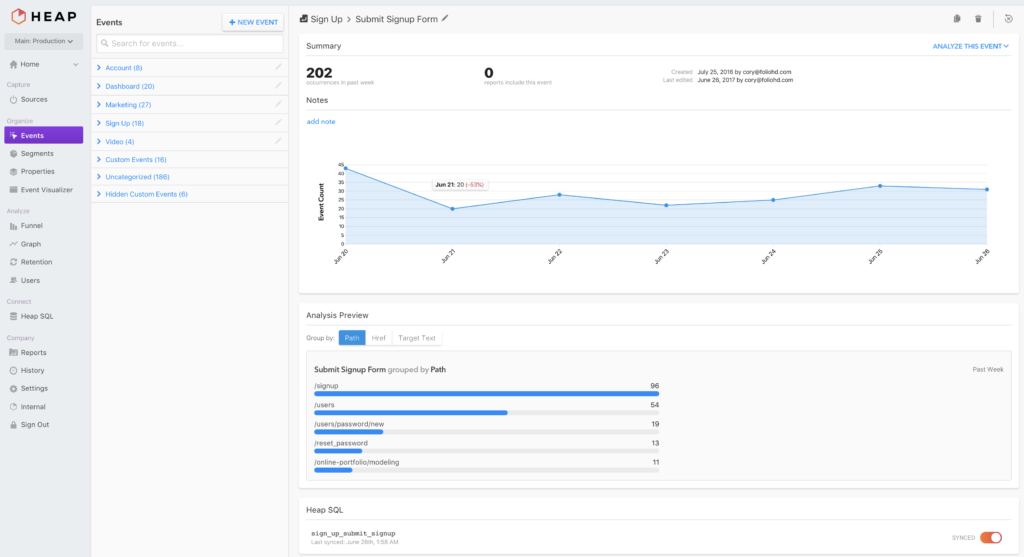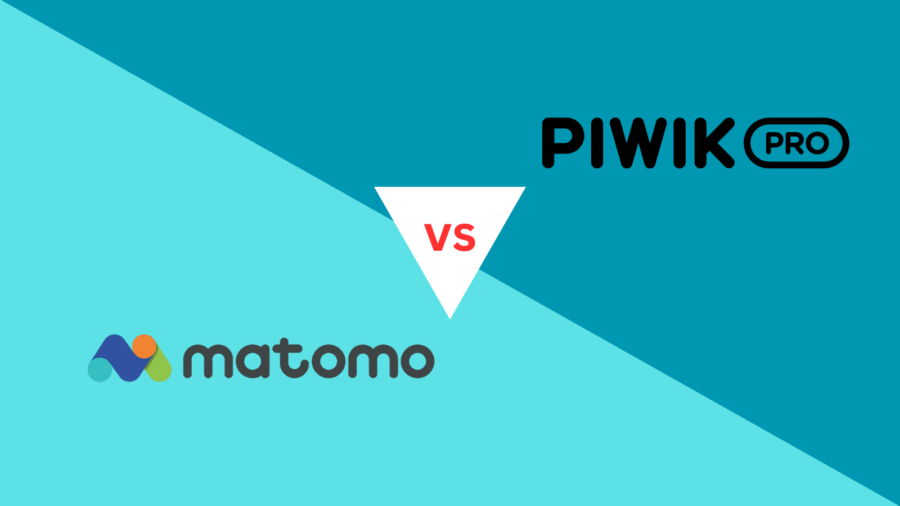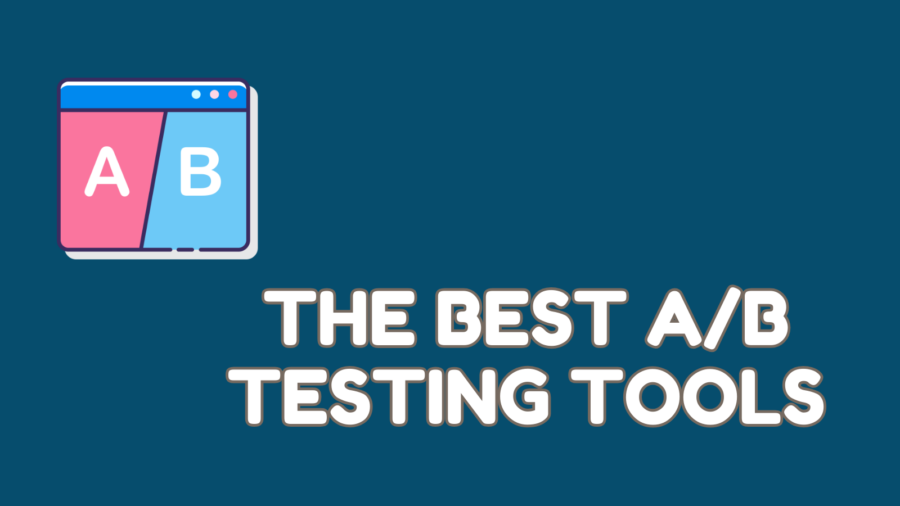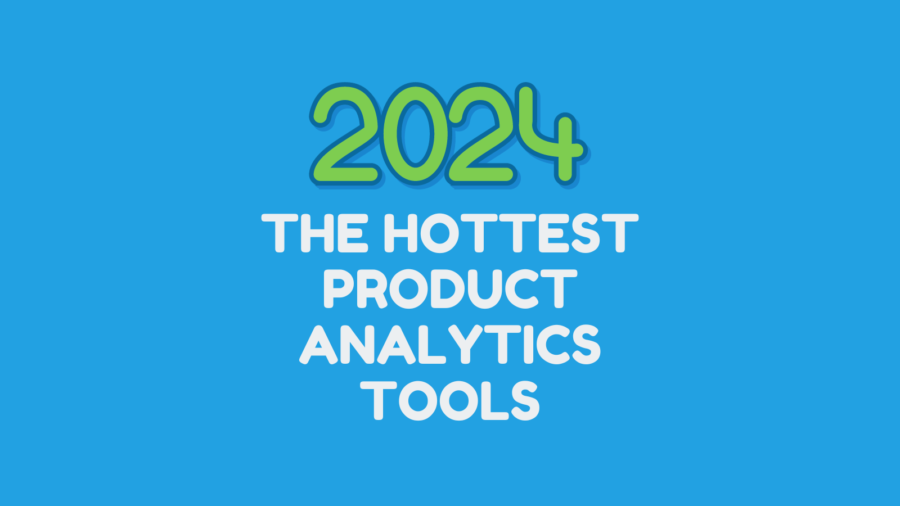Introduction
Understanding user behavior and product performance is paramount for businesses seeking to make data-driven decisions. Heap Analytics is a powerful tool that empowers organizations to gain invaluable insights into how users interact with their products and websites. This article explores the diverse applications of Heap Analytics in product analytics, delving into its advantages and disadvantages to comprehensively understand its capabilities.
A Brief History of Heap Analytics
Founded in 2013 by Matin Movassate and Dan Robinson, Heap Analytics aimed to revolutionize data analytics for businesses. The platform gained rapid popularity with its unique approach to data collection, automating the capture of user interactions without the need for manual event tracking. This innovation marked a significant shift in the analytics landscape, saving valuable development time and offering real-time insights. Over the years, Heap Analytics has continued to evolve, incorporating advanced features and integrations to cater to the ever-growing needs of product analysts and marketers.
User Behavior Analysis
Heap Analytics excels in analyzing user behavior on websites and applications. The platform provides a granular user journey by automatically capturing every user interaction, such as clicks, form submissions, and pageviews. This level of data granularity allows product analysts to understand how users navigate through their platforms, thereby identifying potential pain points and areas for improvement in the user experience.
The advantages of this feature are two-fold. First, the absence of manual event tracking saves time and development effort, allowing teams to focus on other critical tasks. Second, the ability to delve into granular user journey data provides precise insights into user interactions, enabling analysts to pinpoint bottlenecks and areas where the user experience can be optimized. However, the extensive data collection involved may lead to higher storage and processing costs. The automated capturing process might inadvertently capture irrelevant interactions, making data filtering and analysis more complex.

Funnel Analysis
Heap Analytics offers robust funnel analysis capabilities, essential for product teams seeking to comprehend user behavior within specific conversion paths. Analysts can create custom funnels based on either predefined steps or custom events to track user progression through various stages. This aids in identifying drop-off points in the user journey, enabling businesses to optimize their funnels for better conversion rates.
The advantages of funnel analysis lie in its customization options, catering to specific business requirements. Furthermore, the real-time nature of funnel analysis provides immediate feedback on conversion performance, enabling swift adjustments and improvements. However, complex funnels with numerous steps can be challenging to interpret, and the lack of cross-device tracking may result in incomplete funnel data, potentially impacting the accuracy of the analysis.
Retention Analysis
Understanding user retention is vital for businesses to measure customer loyalty and assess the long-term success of their products. Heap Analytics allows analysts to track user retention over time, identifying patterns and trends that impact user engagement. This feature assists in evaluating the effectiveness of product updates, marketing campaigns, and user engagement initiatives.
The long-term retention analysis provided by Heap Analytics offers insights into user loyalty, enabling businesses to assess the impact of new features and updates on user engagement. Businesses can implement targeted efforts to improve user retention and reduce churn by identifying user retention trends. However, this analysis requires a significant amount of historical data to be accurate, and the interpretation of retention trends may vary depending on the business context.
Segmentation Analysis
Heap Analytics offers advanced segmentation capabilities, allowing product analysts to group users based on specific attributes or behaviors. This feature is invaluable for personalizing user experiences, tailoring marketing efforts, and making data-driven decisions for different user segments.
The advantages of segmentation analysis lie in its ability to cater to complex user grouping needs, providing insights into each user cohort separately. This enables businesses to implement personalized strategies based on user behavior and attributes, ultimately improving user satisfaction and engagement. However, over-segmentation can lead to analysis paralysis and data fragmentation, where insights might become scattered and challenging to derive actionable conclusions. Determining relevant segmentation criteria may require deep domain knowledge to ensure meaningful analysis.
A/B Testing and Analysis
A/B testing is a fundamental technique used by product teams to compare the performance of different variations of a product or website. Heap Analytics seamlessly integrates with A/B testing tools, allowing analysts to measure the impact of design changes, content variations, or feature additions on user behavior.
The integration with A/B testing tools offers several advantages. It streamlines the analysis process, facilitating the comparison of different variations and their effects on user engagement and conversion rates. This supports data-driven decision-making for product iterations, ensuring that changes are backed by empirical evidence. However, successful A/B testing requires careful planning and execution to avoid biases in the results. Furthermore, the analysis might be limited to the metrics tracked by the A/B testing tool, potentially overlooking some aspects of user behavior.
Conclusion
Heap Analytics serves as a powerful ally for product analytics, empowering businesses to gain critical insights into user behavior and product performance. Through its automatic data capturing and real-time analysis capabilities, Heap Analytics simplifies the process of understanding user interactions, optimizing funnels, improving retention, and personalizing user experiences. While it offers numerous advantages in simplifying data analytics, businesses must be mindful of potential disadvantages, such as data storage costs, over-segmentation complexities, and the need for well-planned A/B tests.
As technology continues to evolve, Heap Analytics is likely to adapt and enhance its features, further empowering businesses to make informed decisions that drive growth and success. By harnessing the power of Heap Analytics, product analysts can unlock hidden opportunities, foster user satisfaction, and stay ahead in the competitive digital landscape.
You can also check other Unleashing the Power of Product Analytics series tools.





